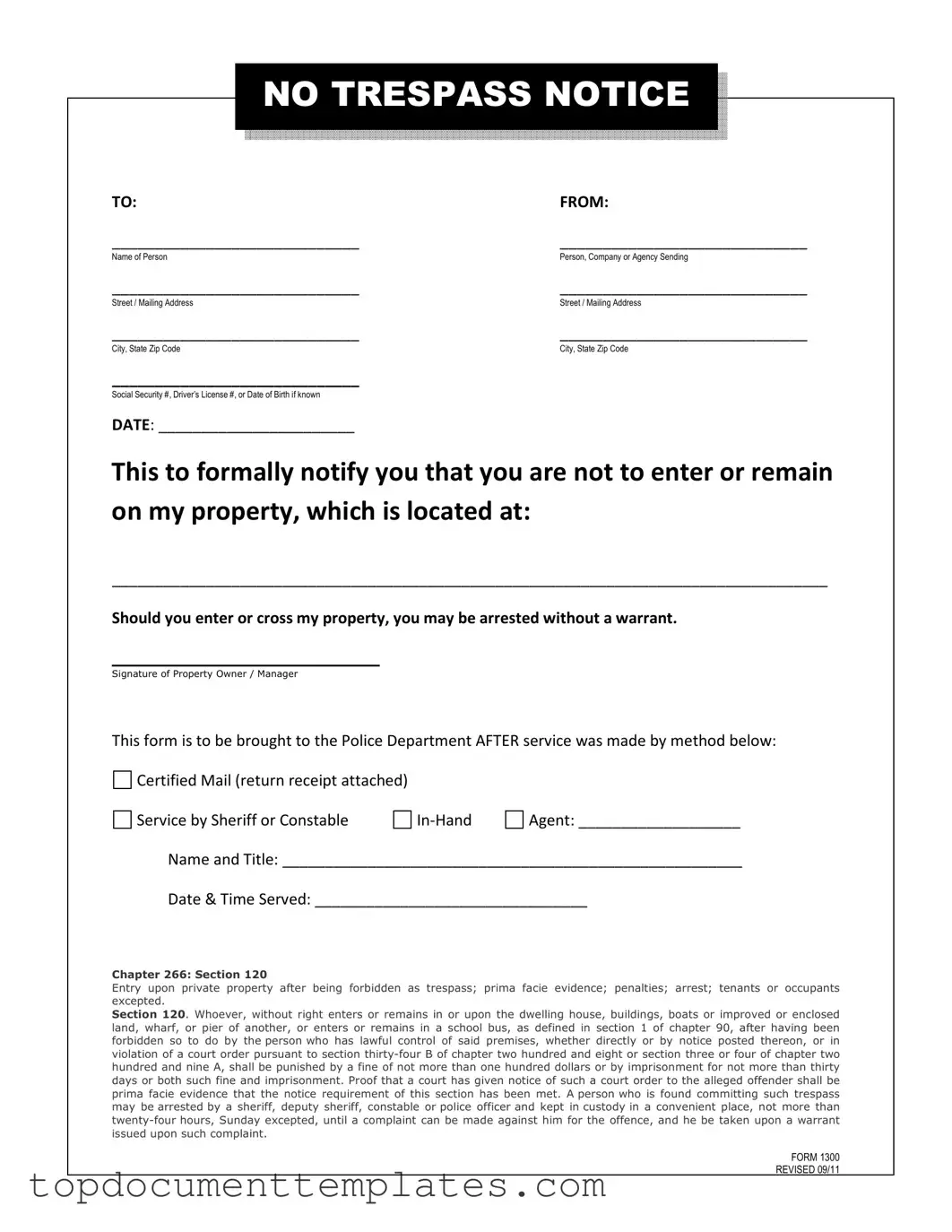When it comes to protecting your property rights, a No Trespassing Letter serves as a crucial legal tool. This form acts as a formal notification to individuals that they are not permitted to enter or remain on your property. It clearly identifies the sender and recipient, providing essential details such as the property address and the date of issuance. The letter also outlines the potential consequences of trespassing, including the possibility of arrest without a warrant. Proper service of this letter is vital; it must be delivered through specific methods, such as certified mail, sheriff, constable, or in-hand delivery. Each method requires documentation to ensure that the notice is legally recognized. The form includes spaces for the name and title of the individual serving the notice, as well as the date and time of service. By utilizing a No Trespassing Letter, property owners can assert their rights and deter unwanted intrusions effectively.
